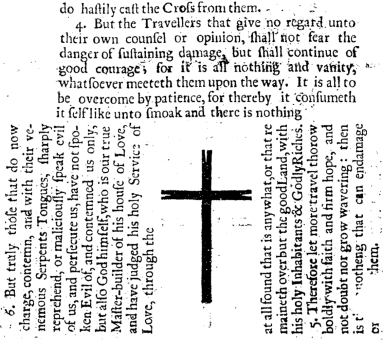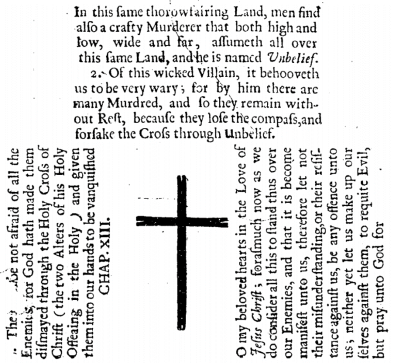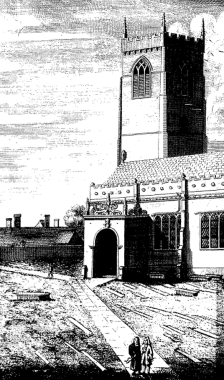Laura Sangha
NEWS FROM
PUDDLE-DOCK
IN
LONDON:
OR,
A Perfect particular of the strange Apparition
and Transactions that have happened
in the House of Mr. Edward Pitts
next Door to the Still at Puddle-Dock.
This blog is a paraphrased version of a pamphlet published
in London in 1674. For other posts on early modern ghosts click here.


f any year might justly be termed Annus Mirabilis, then this is certainly it. A year in which it is as though Nature had forgot to walk in her common road, thrusting out into the World a multitude of prodigious and almost extravagant Events. Wonders in Warfare, wonders in Death, wonders in Politics.
At least our costly and fruitless War with the Dutch ended in February. And I was pleased to see the Theatre Royal on Drury Lane reopen after its Great Fire rebuilding, though Joy-in-Sorrow and Fly-Sin Lofthouse, my door neighbours, were less pleased. They say these, and other signs of Gods anger against the Nation are only to be expected as the just reward for our abominable and crying sins against the Divine Majesty, God Save Him. (Though I say his Divine Majesty is hardly spotless himself). Fly-Sin said we can hardly be surprised that the Devil is loose amongst us in such troubled and sinful times!
On which, I must tell you about the strange and stupendous disturbances at the house of Mr Edward Pitts of Puddledock (it’s near Blackfriars on the river). The house is two Rooms of a Floor; and for the 15 or 16 Nights past, the two Rooms up one pair of stairs have been continually haunted between 12 and 1 of the clock. How it is, is when the family goes to bed, the two doors to the rooms are shut fast, but in the morning they hath always found them open. What’s more, not one night in all this time but the Goods in this Kitchin, and Parler have been removed from one place to another in a most strange manner. In the Kitchin the Pewter hath been taken off the shelves and laid any where about the Room. A Box of Candles of 5 or 6 pound have been taken out of the Box and planted about the Room, some put in Candlesticks, and others laid by two and two.
But what is most remarkable was on the last Lords-day at Night. The Family going to Supper, a Fold-up Table (which stood on one side of the Kitchin) was brought to the fire side, upon which the Meat was set. Mr Pitts takes up the Loaf off the Dresser to cut bread to lay on the Table, then as he was cutting the Bread he spied on the Dresser a great thing like a Catt. At which he being a little affrighted, he started back calling to his Wife, saying, here’s a Catt, I never saw a Catt in this house before. Upon which, this Cat-like thing seemed to slide off the Dresser, giving a thump on the Boards, and so vanished away. Of all those in the Room, only Mr Pitt and his daughter (15 years of Age) could see the Catt, and they say it was as bigg as any Mastiff Dog, but they could not perceive that it had any Leggs.
That night, the Watchmen as they have gone by have called, have a care of your lights Pitts! Upon which Mr Pitts endeavoured to rise and see if he could find any light in his house; but he told me himself that he had no power to stir. He said he was not fearful, but he could not rise; he also told me that that night he had a great light in his Chamber several times, and that it diminished little and little till all his Room was dark, and then of a sudden he had as much Light as if it had been clear day.
In the morning when he got up and went to see what alterations he could in his 2 haunted Rooms, when he came down he found his Kitchin-door wide open, but his Parler door was off the Latch a little ajar, barricadoed with a great 2 handed Chair. He thrust the Chair aside and opened the door, when he came into the Room, upon the Table there he found a great Wooden Sand-box, upon which was 2 snuffs of Candles burnt to Ashes. A 3d Candle had been upon that Box, which had burnt all one side of the Box and made a terrible stink in the house (which I should have mentioned before). The Sand-box Candlestick Mr Pitts had never seen before; but that which was yet more Wonderful is this, by this Sand-box was placed upon the Table two Splinters of Wood cross-ways. Three Ends or Corners of this Cross was cleft, and in each cleft there was stuck a Paper printed on both sides as you it here verbatim:


Right against this Cross and Papers by the Table side was placed a Chair, as if some one had sat there viewing them over.
This night, Mr Pitts intends to have some people to sit up, that may speak to any thing that shall appear, and to demand in the name of the Father, what are you? I’ve a mind to go along myself.


